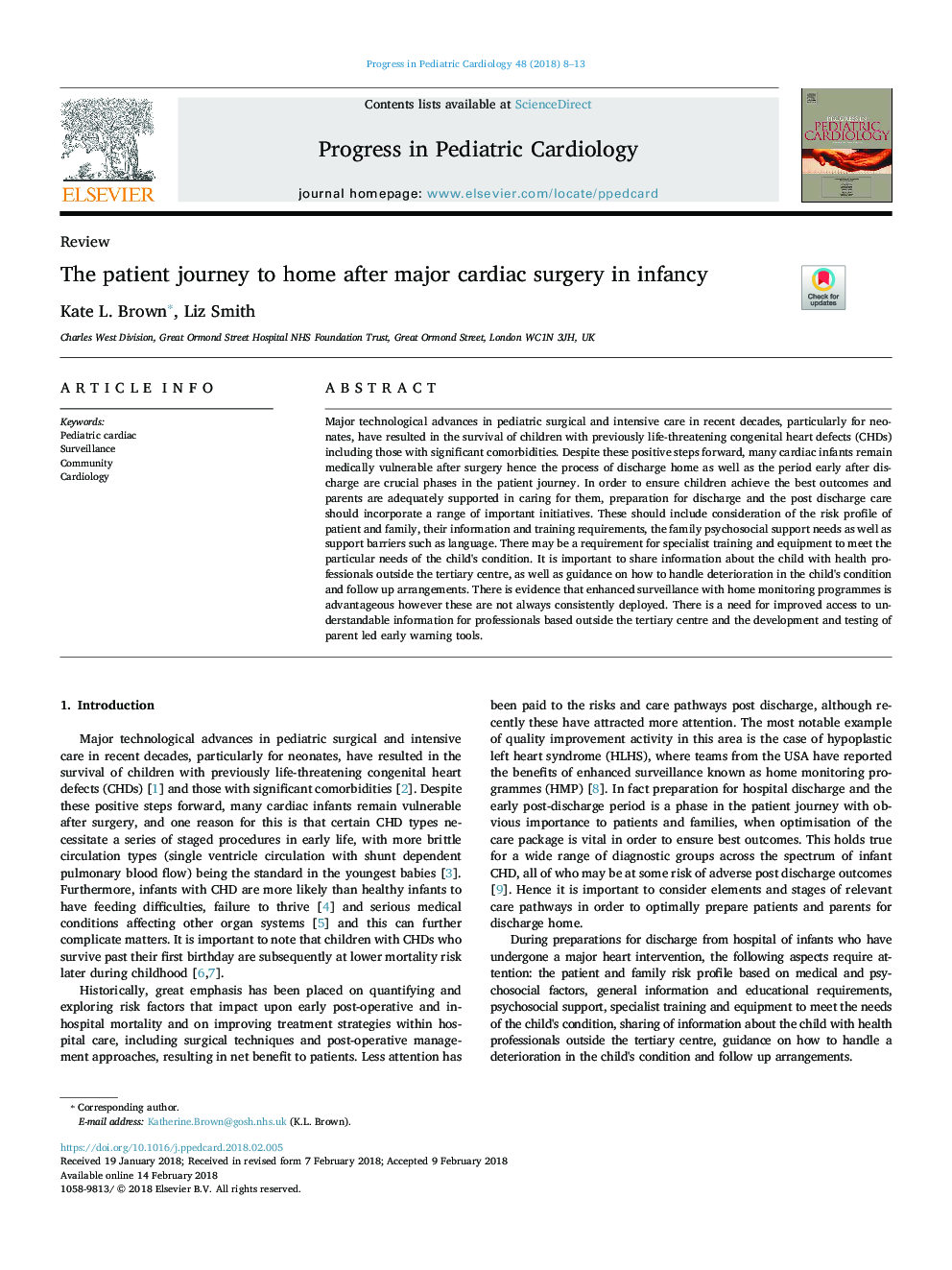| Article ID | Journal | Published Year | Pages | File Type |
|---|---|---|---|---|
| 8675331 | Progress in Pediatric Cardiology | 2018 | 6 Pages |
Abstract
Major technological advances in pediatric surgical and intensive care in recent decades, particularly for neonates, have resulted in the survival of children with previously life-threatening congenital heart defects (CHDs) including those with significant comorbidities. Despite these positive steps forward, many cardiac infants remain medically vulnerable after surgery hence the process of discharge home as well as the period early after discharge are crucial phases in the patient journey. In order to ensure children achieve the best outcomes and parents are adequately supported in caring for them, preparation for discharge and the post discharge care should incorporate a range of important initiatives. These should include consideration of the risk profile of patient and family, their information and training requirements, the family psychosocial support needs as well as support barriers such as language. There may be a requirement for specialist training and equipment to meet the particular needs of the child's condition. It is important to share information about the child with health professionals outside the tertiary centre, as well as guidance on how to handle deterioration in the child's condition and follow up arrangements. There is evidence that enhanced surveillance with home monitoring programmes is advantageous however these are not always consistently deployed. There is a need for improved access to understandable information for professionals based outside the tertiary centre and the development and testing of parent led early warning tools.
Keywords
Related Topics
Health Sciences
Medicine and Dentistry
Cardiology and Cardiovascular Medicine
Authors
Kate L. Brown, Liz Smith,
